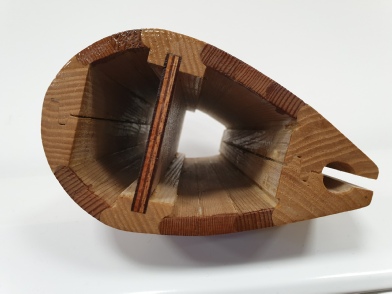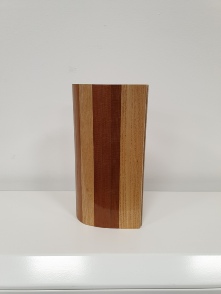





The Mast
Having a penchant for making life difficult for myself, I decided to make a strip-
My initial reason for making the mast this way was to save weight. The core of a mast adds very little strength to it, as the windward side is in tension, and the leeward side is in compression -
Constructing the full size mast proved to be much more challenging. I decided right at the start of the process that I would use the traditional spar making material, Sitca Spruce. This timber is very long grained, and exceptionally strong. I am fortunate to have a very good marine timber supplier locally, and I sourced a piece of clear 100 X 150 Spruce 7.5 metres long from Stones Marine Timber. This was far to big for me to cut into the required 8 X 20 mm strips, and so I had to have it cut before delivery.
Being a complete idiot, I decided to taper the mast above the hounds both laterally and towards the aft. Unfortunately, it is very poor practice to just use a straight taper, as this introduces a single sharp bend in the timber a the start of the taper, and among other considerations, looks horrible. I therefore designed a parabolic curve from the hounds to the top of the mast.
This sounds complicated, but it is fairly simple using the following method. (Thank you, Euclid!)


| Centreboard case assembly |
| Bevel_Jig_Photos |
| Bow clamp |
| Progress! |
| Strip clamp (Mark 2 B) |
| Bow clamps again |
| Strip joint! |
| The hull at 6th June 2017 |
| Sanding the hull |
| Applying the fibreglass |
| Peel-ply and amine blush |
| Suppliers_2 |